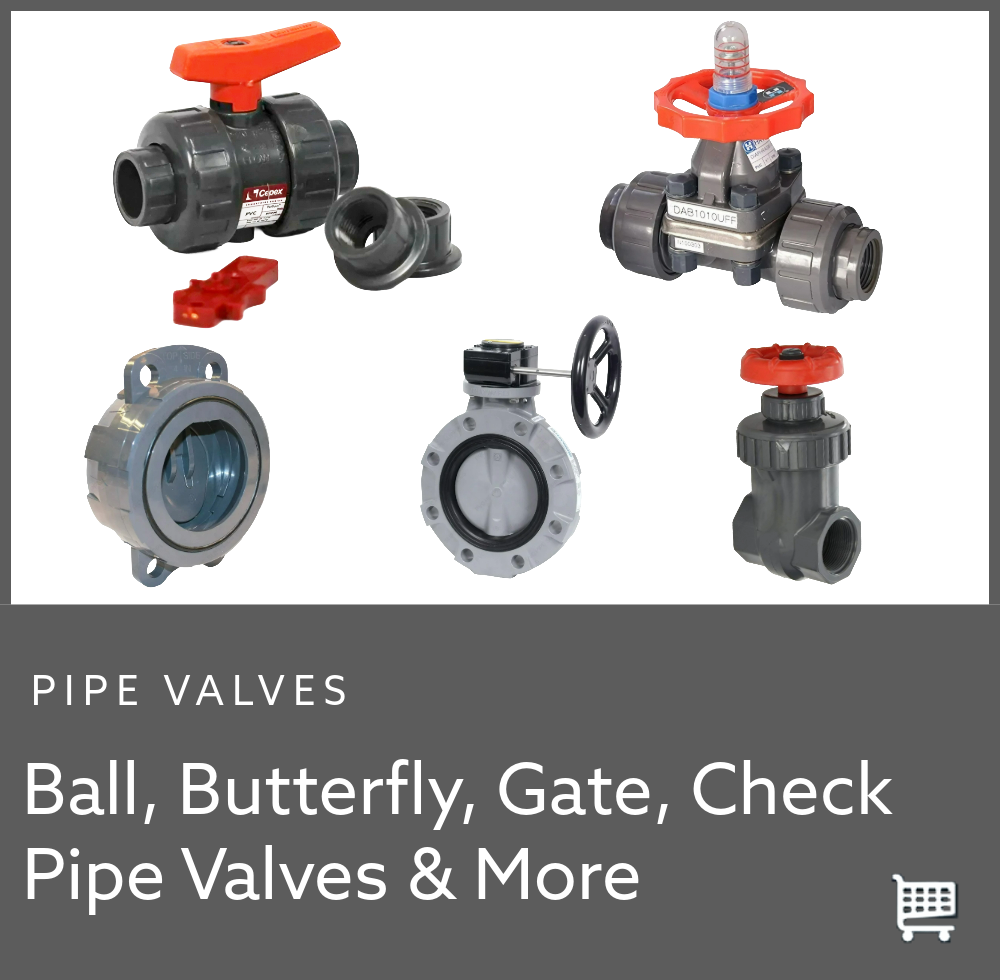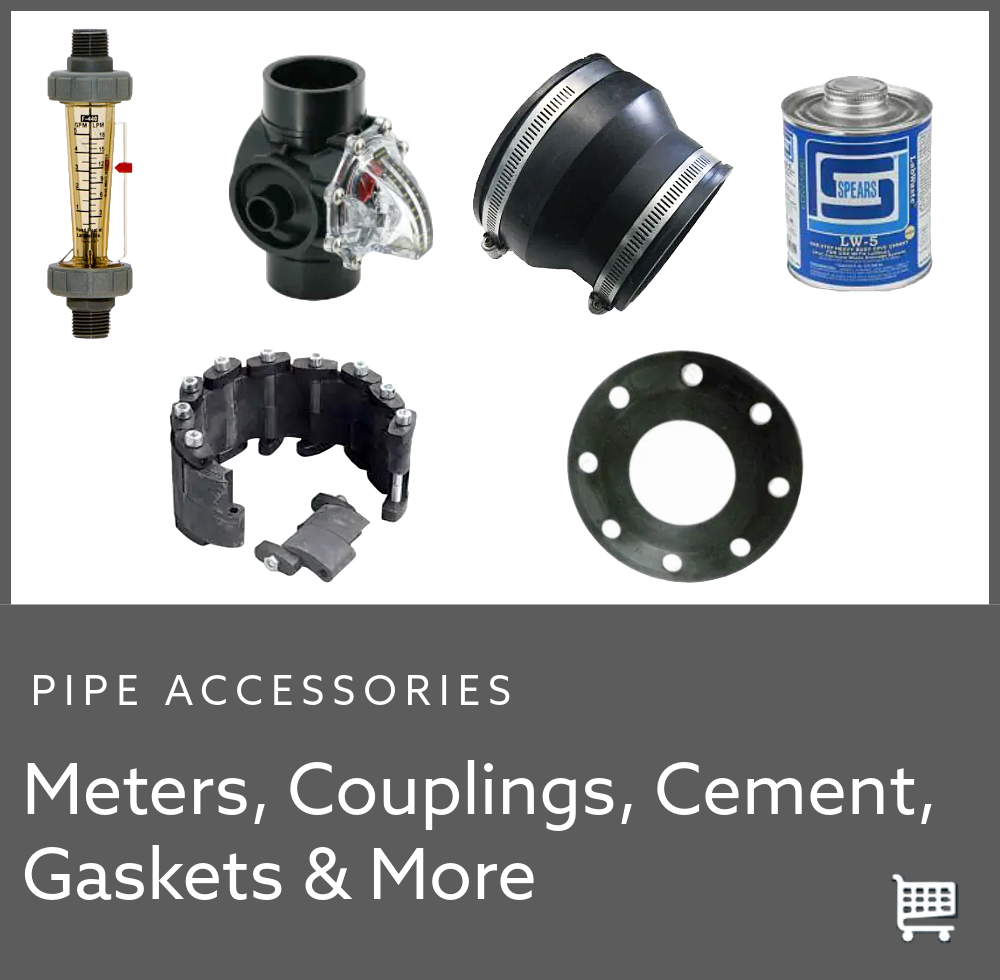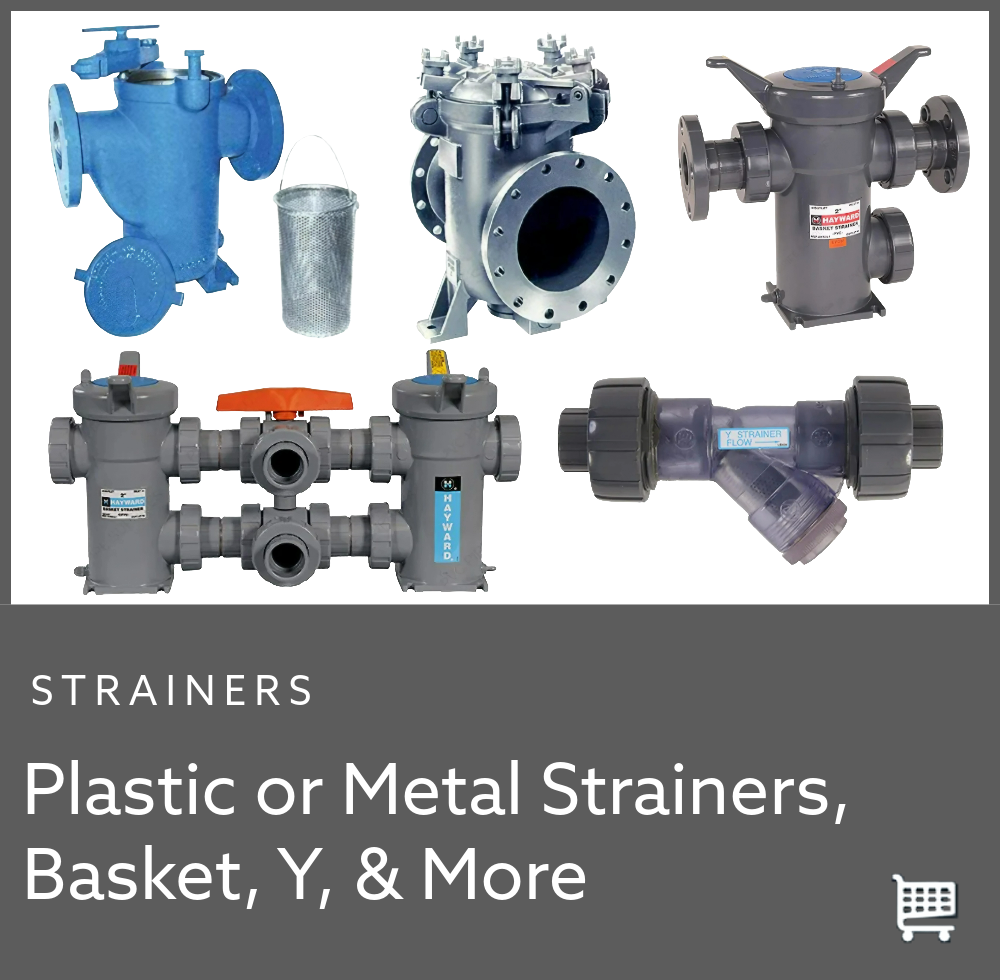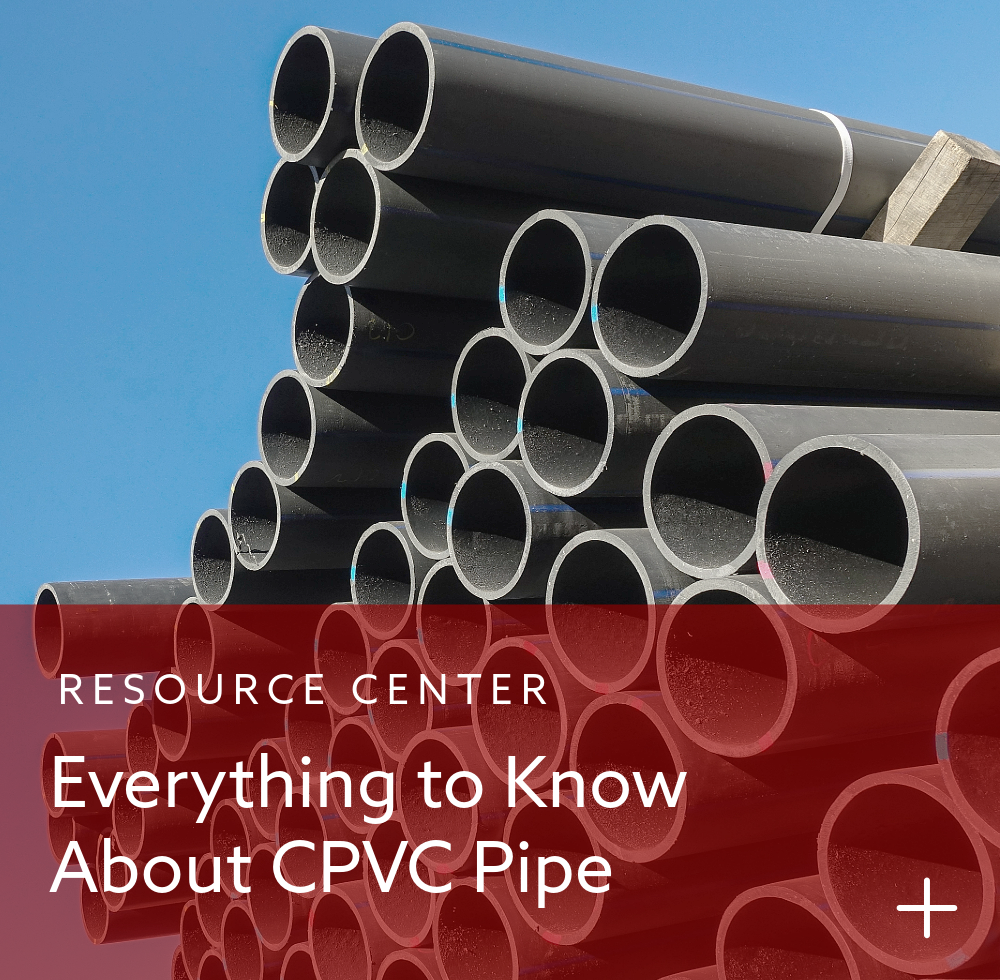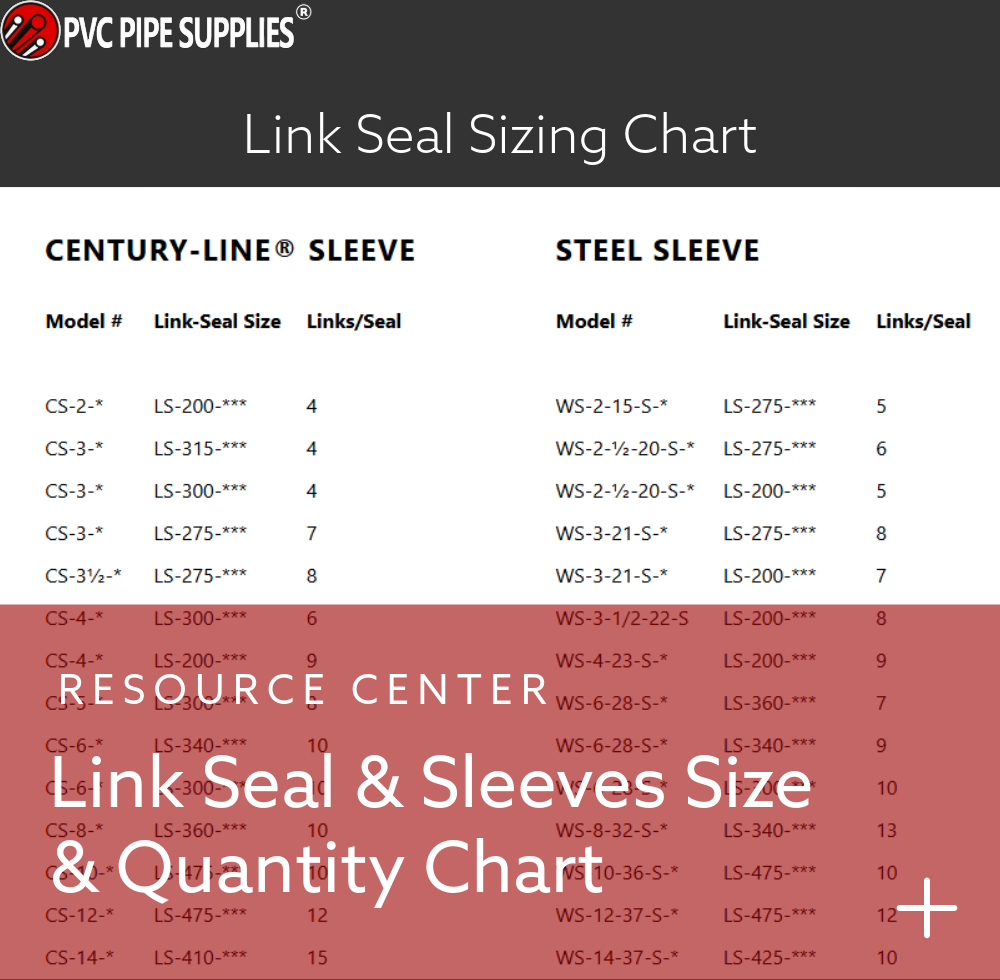 |
When pipes and other conduits need to pass through walls, floors, or ceilings, they need a secure and watertight seal. This is where link seals come into play as a reliable, easy to use, and effective solution for plumbing and piping systems. Whether in commercial, industrial, or residential applications, link seals provide a robust barrier against leaks, contamination, air flow, and other risks. Here we’ll cover what link seals are, their various applications, benefits, and types, as well as how to select the right link seal for your project. |
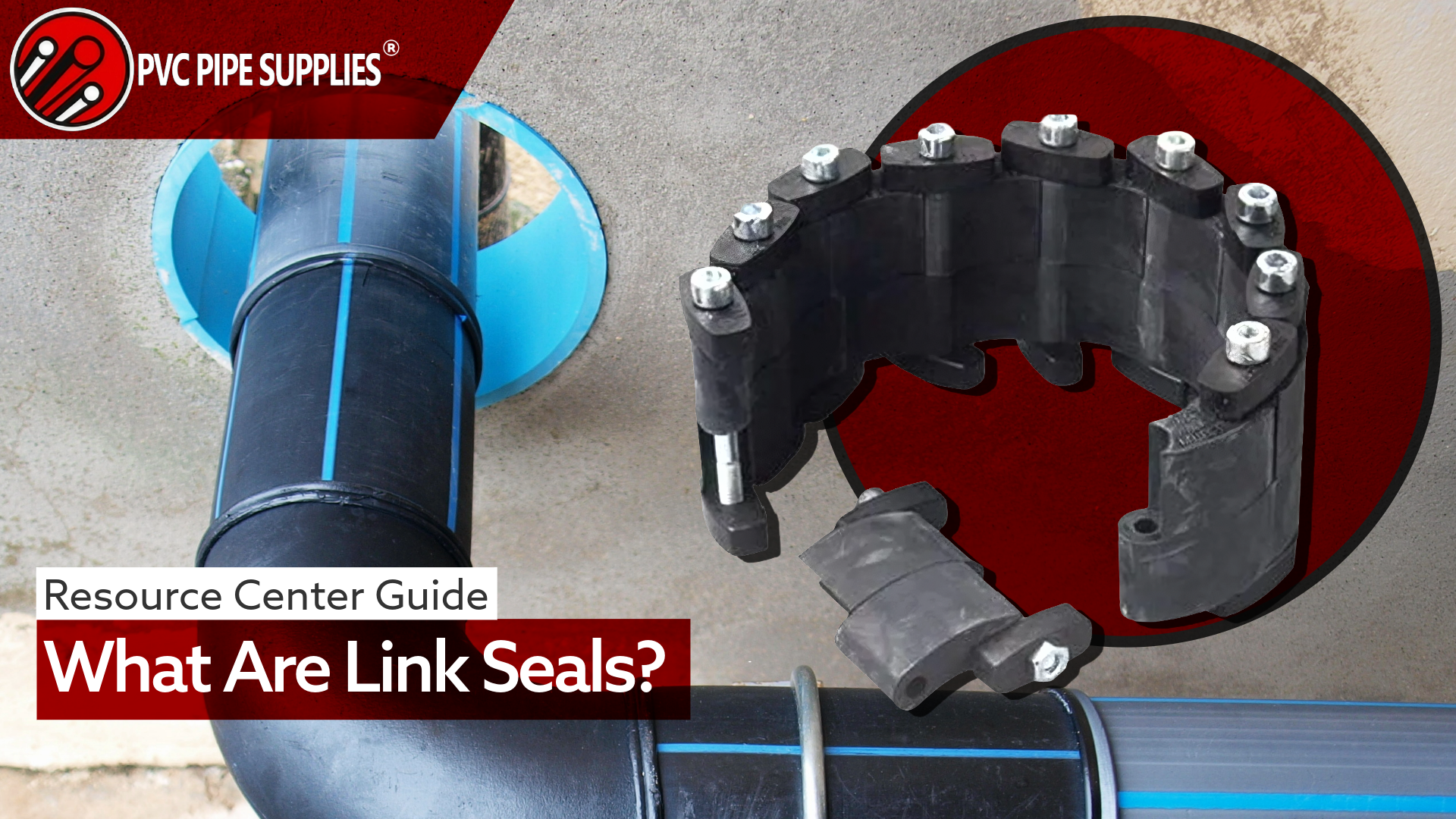

When pipes and other conduits need to pass through walls, floors, or ceilings, they need a secure and watertight seal. This is where link seals come into play as a reliable, easy to use, and effective solution for plumbing and piping systems. Whether in commercial, industrial, or residential applications, link seals provide a robust barrier against leaks, contamination, air flow, and other risks.
Here we’ll cover what link seals are, their various applications, benefits, and types, as well as how to select the right link seal for your project.
What Are Link Seals?
Link seals are modular mechanical sealing systems designed to create airtight and watertight seals around pipes and conduits. They are typically installed wherever pipes pass through solid surfaces such as concrete walls, floors, or steel bulkheads. Link seals are made up of interlocking rubber links that are compressed using bolts to form a durable seal.
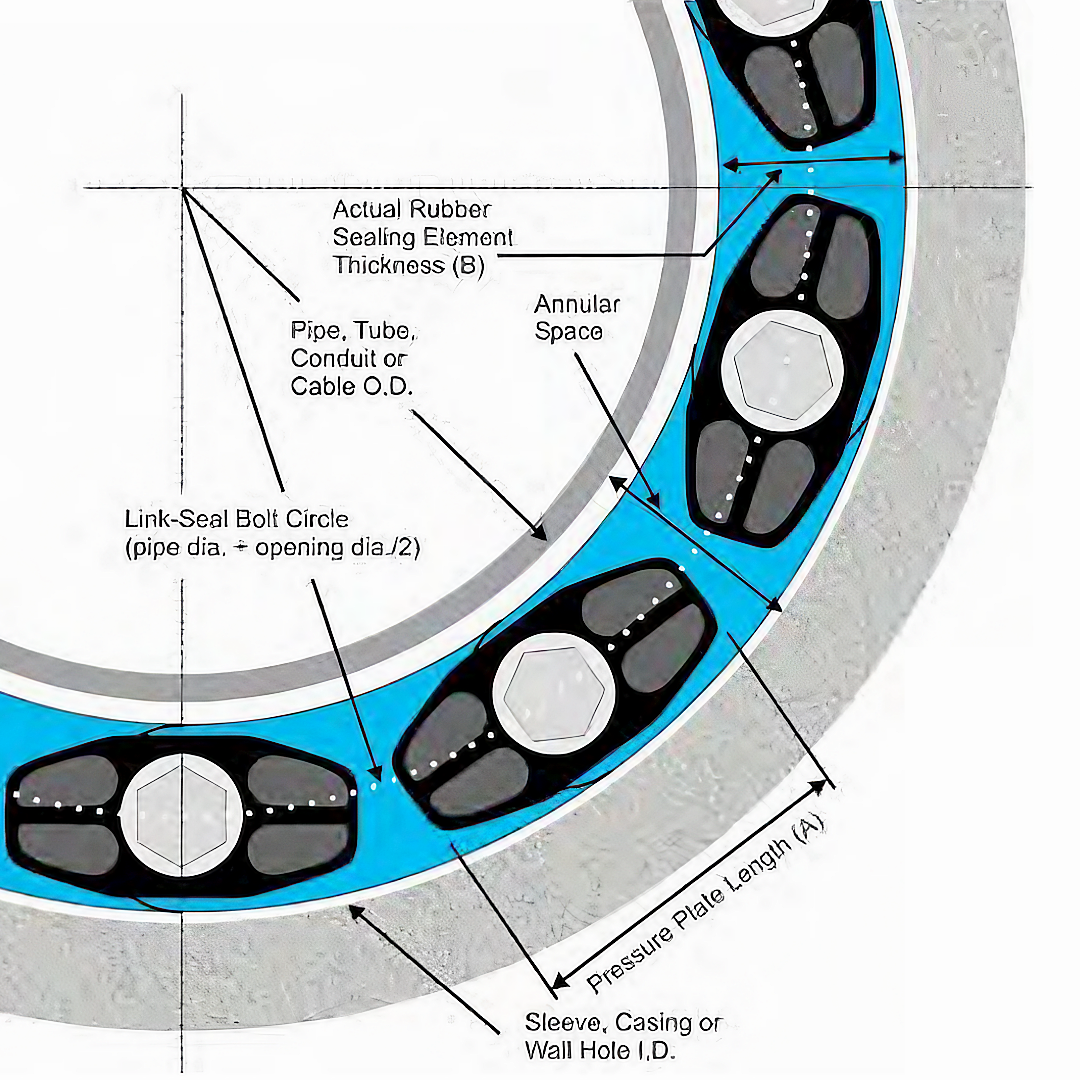

Main Parts of Link Seals
- Rubber Sealing Elements: The primary components that form the seal. Materials like EPDM (standard), nitrile, or silicone rubber are often used for their overall durability and versatile resistance. Nitrile and silicone link seals are available on request
- Pressure Plates: Made from reinforced materials such as nylon or stainless steel, these distribute pressure evenly across the seal to ensure proper engagement.
- Bolts and Hardware: Used to secure the links in place and compress them to form the seal; available in zinc dichromate steel and 316 stainless steel.
- Color Coding: Link seals are color coded to match their manufacturing material, whether EPDM (black, blue), nitrile (green), or silicone (gray); blue EPDM and others available on request.
- Size: Links come in various sizes to match hole and pipe diameters and establish a secure seal. Size is based on product code. Use our Link Seal Sizing Chart to find the right product and the correct quantity based on pipe size.
With proper assembly and installation, link seals provide reliable protection against fluids, gases, and debris that might otherwise infiltrate around a poorly sealed pipeline.
Uses of Link Seals in Plumbing and Piping Systems
Link seals are used to protect infrastructure, permanently seal holes, and ensure the longevity of pipelines. Here's a closer look at their uses:
- Sealing Pipe Penetrations: Link seals create watertight and airtight barriers at the location where pipes pass through solid structures, such as walls, floors, and ceilings. This prevents leaks and external intrusion from weather, air, pests, and the like.
- Pressure Endurance: With the ability to withstand pressures up to 20 psig, (head, 40ft.), link seals are strong enough to meet most application’s performance requirements.
- Pipe Isolation: By insulating the pipe from the surrounding surface, link seals protect against corrosion and wear that can be caused by vibrations or physical contact.
Common Applications of Link Seals
Link seals are a versatile pipe accessory that can be used across numerous industries and installations. Here are some of the most common applications:
Common Applications of Link Seals
Link seals are a versatile pipe accessory that can be used across numerous industries and installations. Here are some of the most common applications:
1. Walls and Floors
Link seals are most frequently used wherever pipes must be plumbed through walls and floors, most often concrete, whether for HVAC systems, water lines, chemical transport, or electrical conduits.
2. Ceilings
When pipes or conduits pass through ceilings, link seals prevent water or air leakage while ensuring a fire resistant barrier in some cases.
3. Underground Installations
Link seals are ideal for pipes entering underground vaults, manholes, or basements. They prevent the infiltration of moisture, soil, and debris, especially in high humidity environments like parking garages.
4. Industrial and Commercial Facilities
Facilities that involve chemical processing pipelines, cooling systems, or compressed air systems rely on link seals for secure, long lasting installations.
5. Additional Applications
In addition to these, link seals are widely used in municipal water and wastewater treatment plants, utility vaults, and manholes for reliable protection against leaks and contamination. They're also commonly installed in data centers and telecom facilities to protect electrical conduits, fiber optic lines, and plumbing used in cooling lines.
Parking garages, basements, and renewable energy installations, such as those at solar and wind sites, often require link seals due to their resilience against water and environmental exposure.
This broad range of applications demonstrates just how essential link seals are in everyday infrastructure as well as in specialized industrial environments.
1. Walls and Floors
Link seals are most frequently used wherever pipes must be plumbed through walls and floors, most often concrete, whether for HVAC systems, water lines, chemical transport, or electrical conduits.
2. Ceilings
When pipes or conduits pass through ceilings, link seals prevent water or air leakage while ensuring a fire resistant barrier in some cases.
3. Underground Installations
Link seals are ideal for pipes entering underground vaults, manholes, or basements. They prevent the infiltration of moisture, soil, and debris, especially in high humidity environments like parking garages.
4. Industrial and Commercial Facilities
Facilities that involve chemical processing pipelines, cooling systems, or compressed air systems rely on link seals for secure, long lasting installations.
5. Additional Applications
In addition to these, link seals are widely used in municipal water and wastewater treatment plants, utility vaults, and manholes for reliable protection against leaks and contamination. They're also commonly installed in data centers and telecom facilities to protect electrical conduits, fiber optic lines, and plumbing used in cooling lines.
Parking garages, basements, and renewable energy installations, such as those at solar and wind sites, often require link seals due to their resilience against water and environmental exposure.
This broad range of applications demonstrates just how essential link seals are in everyday infrastructure as well as in specialized industrial environments.
Benefits of Using Link Seals
There are several advantages to using link seals in pipelines and plumbing systems:
1. Superior Sealing Capabilities
Link seals ensure pass through joints are reliably watertight and airtight to prevent conditions that could damage structures or disrupt operations.
2. Durability
With modern rubber sealing elements and robust hardware, link seals are built to withstand many work environments and exposure conditions, including temperature fluctuations and corrosion from water, seawater, and various chemicals.
3. Easy Installation
Installing link seals is a relatively straightforward process requiring minimal labor and tools. This helps save time and reduces overall project costs.
4. Versatility
Link seals are suitable for various pipe materials, including PVC, CPVC, PVDF, ABS, steel, copper, and others, as well as different pipe diameters, making them adaptable to different needs.
5. Environmental Resistance
Their construction materials, such as zinc dichromate coated or stainless steel bolts and EPDM rubber, make link seals highly resistant to moisture, chemicals, ozone, and UV radiation, prolonging their lifespan.
Types of Link Seals
Link seals come in two main types, with different sealing material options available on request, each built to match specific project needs. Below are the most common types:
1. Carbon Steel Link Seals with Proprietary Zinc Dichromate Coating
- Features: More economical option without compromising on safety, reliable for standard applications.
- Best Used For: Dry environments or installations where chemical exposure is minimal.
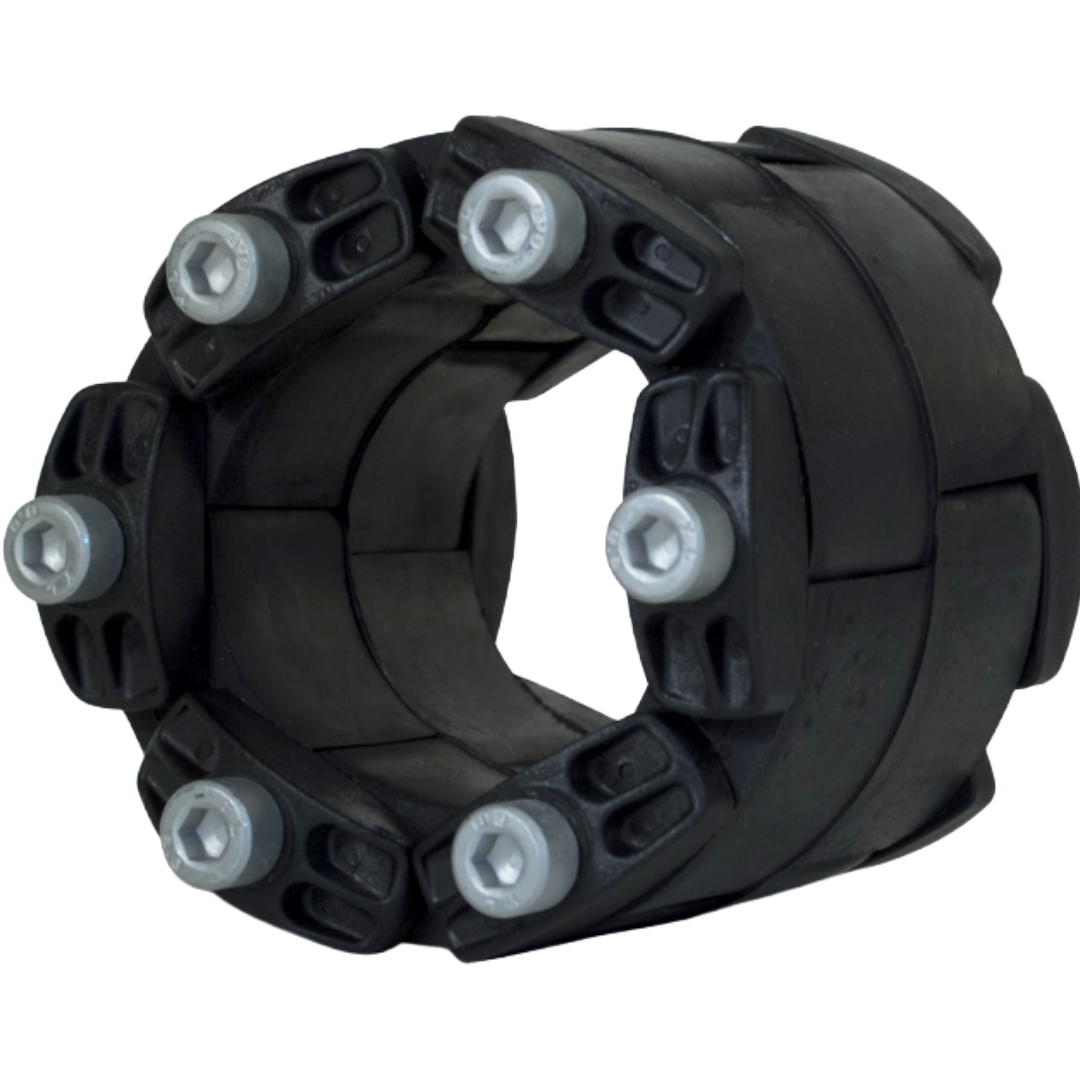

2. Stainless Steel Link Seals
- Features: Resistant to corrosion, high moisture environments, and various chemicals.
- Best Used For: Water and wastewater pipes, industrial settings, and outdoor installations.


3. Specialized Rubber Seals
- Materials:
- EPDM Rubber: Ideal for water and weather resistance.
- Nitrile Rubber: Resistant to oil and chemicals.
- Silicone Rubber: Offers superior fire resistance.
- Usage: These seals are selected based on the specific conditions of the installation.
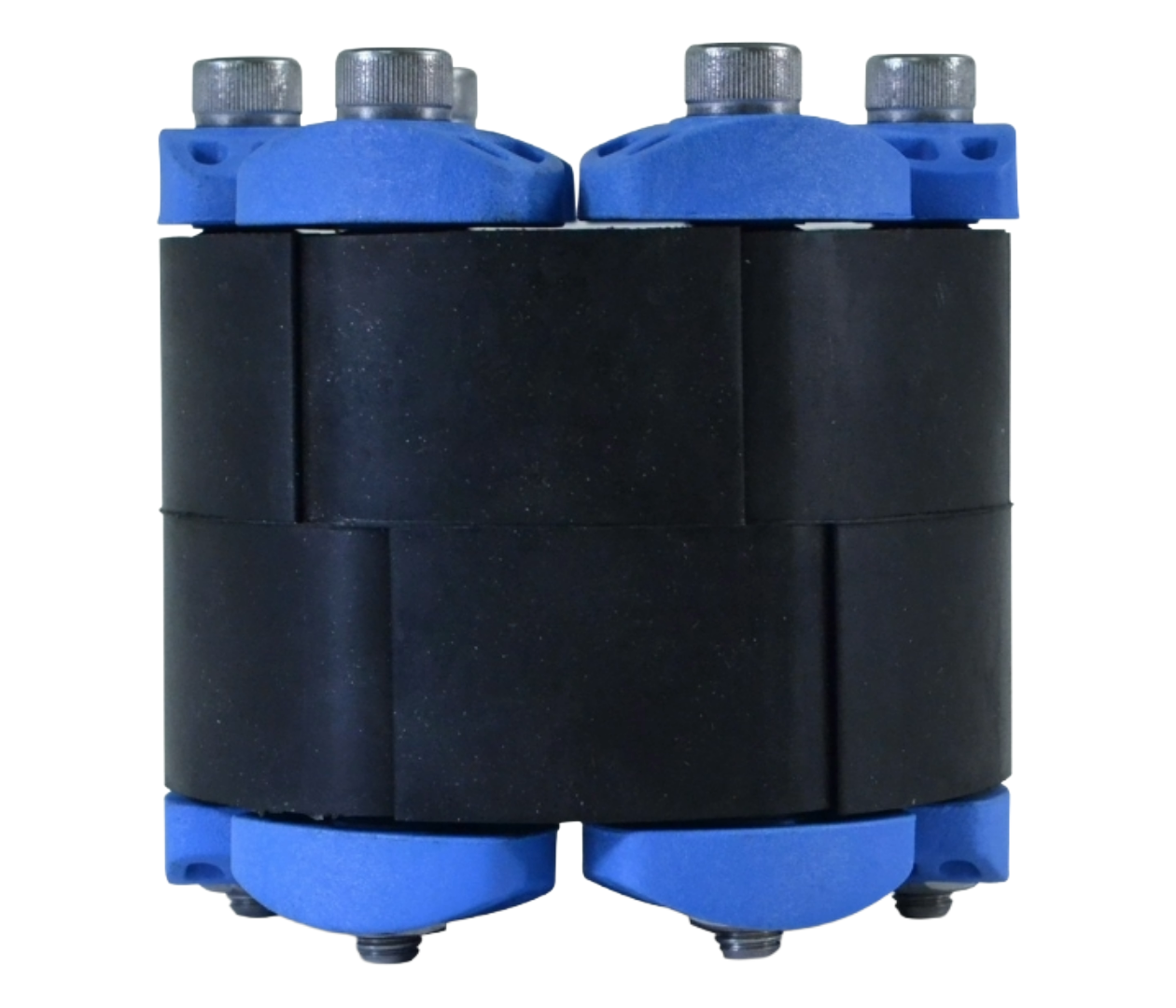

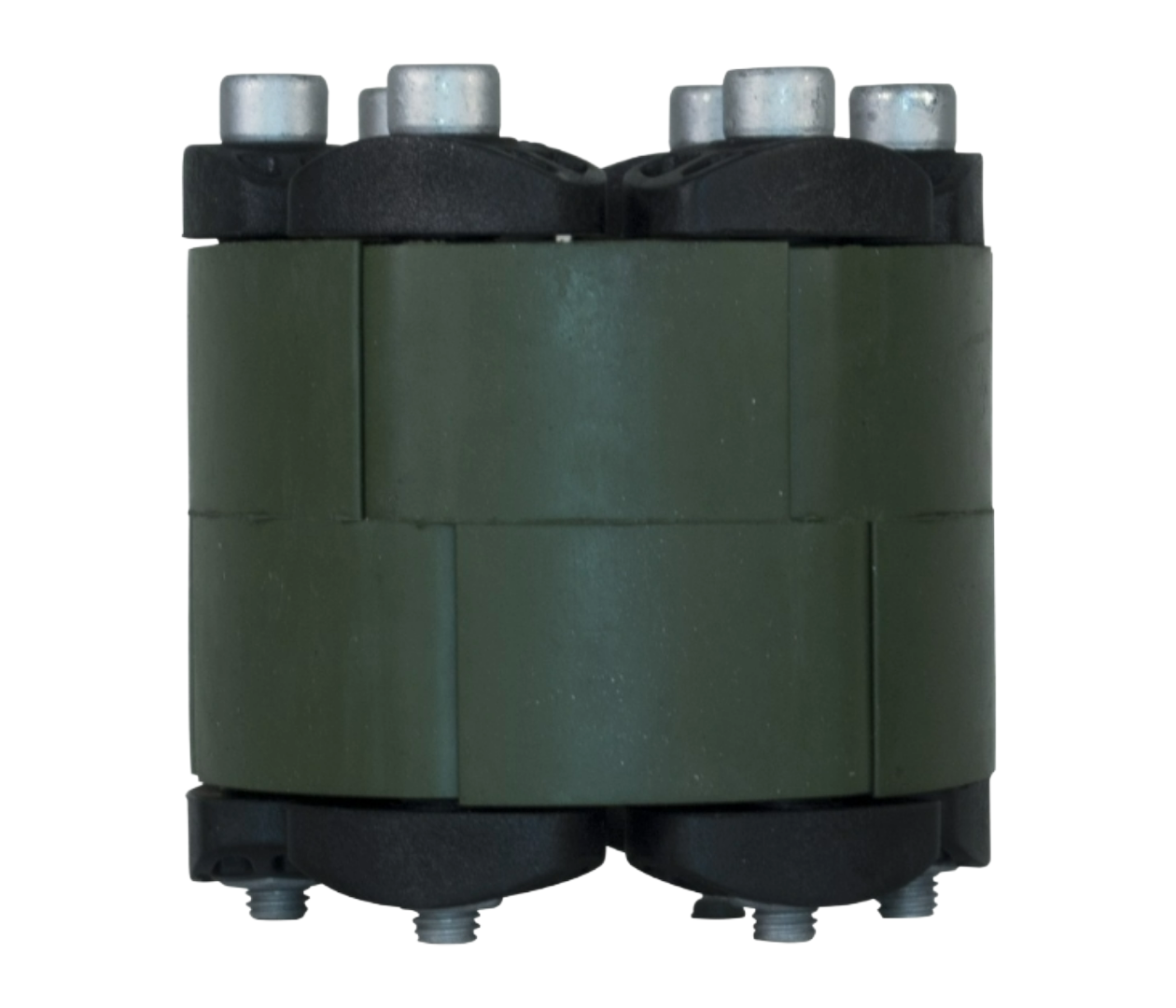



How to Choose the Right Link Seal
Here’s what to consider when looking to buy the right link seal for your project:
1. Pipe Material and Diameter
Ensure the link seal is compatible with the type and size of pipe you are using and that you verify the correct number of link seals to purchase. Link seals are sold individually to easily accommodate different sized plumbing.
2. Environmental Conditions
Understand the working conditions where the seal will be installed. For example, opt for stainless steel hardware in high moisture or corrosive environments, and select EPDM or silicone rubber seals for water resistance.
3. Pressure Requirements
Ensure the seal can handle the pressure levels it will be subjected to. Our link seals can accommodate up to 20 psig or around 40 feet of static head pressure.
4. Industry Specific Needs
Certain industries, such as food and beverage or chemical processing, may require specialized seals with specific certifications or materials. Our link seals do carry NSF 61 certification.
Consult sizing charts and specifications to ensure a proper quantity and quality fit.
Buy Quality Link Seals from PVC Pipe Supplies
Link seals are a proven solution for creating long lasting, reliable seals in plumbing and piping systems. Their ability to combine durability, ease of installation, and versatility makes them an essential component in residential, commercial, and industrial applications that need secure hole seals.
By choosing the right type of link seal, the correct amount, and with proper installation, you can drive the safety, efficiency, and lifespan of your pipeline constructions. Explore PVC Pipe Supplies selection of carbon steel and stainless steel link seals to find the perfect fit for your next project today.
